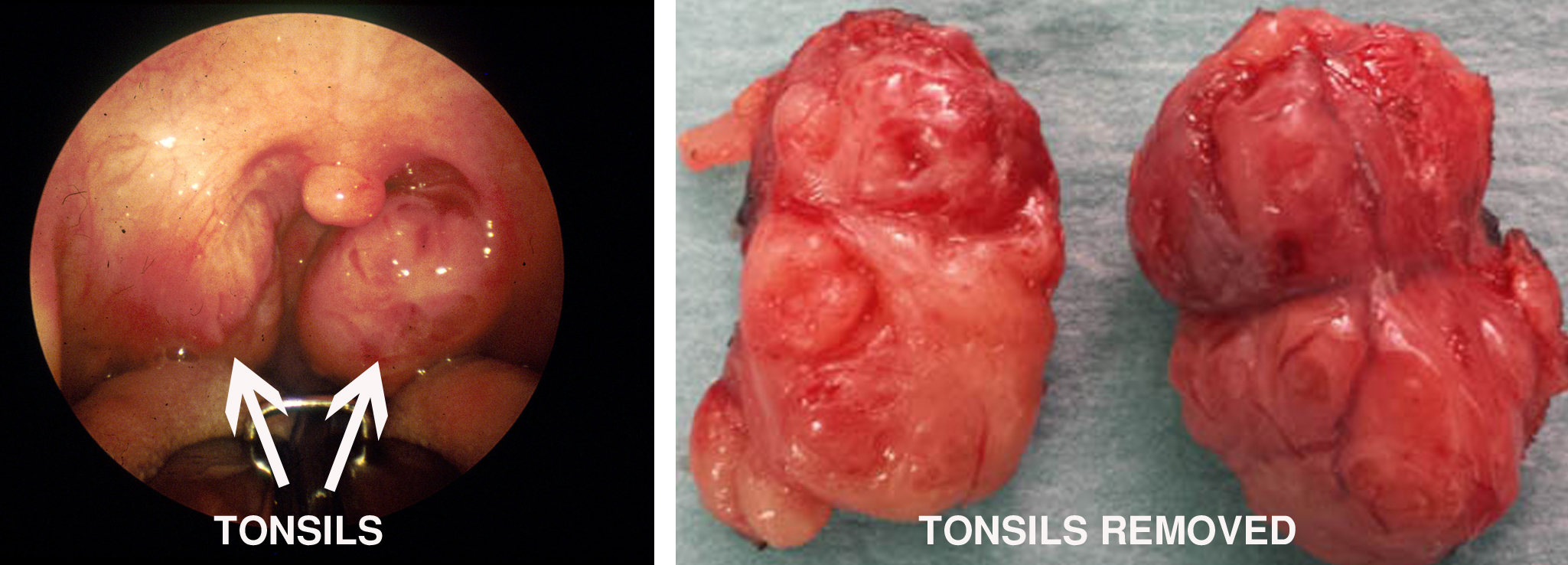Home / Throat and Voice / Tonsils
Tonsils
Call +65 8125 3580
for 24 by 7 appointment
What are tonsils?

A group of lymphoid tissue is present behind the nose, at the back of the throat and the back part of the tongue. Arranged almost like a ring, this lymphoid tissue is called the Waldayer’s Ring. The lymphoid tissue at the back of the throat is commonly referred to as tonsils. As it is located in the pharynx, it is appropriately called Pharyngeal tonsils. The tonsils can be seen at the back to the throat with a torch or headlight examination. The tonsils may vary a lot in size.
The lymphoid tissue behind the nose is referred to as adenoids and the lymphoid tissue at the back of the tongue as lingual tonsils. Adenoids and the lingual tonsils cannot be visualised by looking into the throat with a torch or a headlight.
The function of this group of lymphoid tissue is to fight infection. Tonsils have an important role in fighting infection particularly in children. But as the child grows older, the immune system matures, other structures in the body become involved in fighting infections, its role becomes somewhat redundant. The tissue of the tonsils contains a lot of bacteria. In a healthy state these bacteria lives in harmony in the tonsils but sometimes they can cause the tonsils to get infected. When these episodes of infection become very frequent and require frequent antibiotics, removal of the tonsils (tonsillectomy) can be considered. Apart from chronic tonsillitis there are several other indications of a tonsillectomy.
How is a tonsillectomy done?
Tonsillectomy is a very common operation particularly in children. Tonsillectomy may be performed as a Day Surgery procedure.
The surgery is carried out under general anaesthesia. The surgery is performed through the mouth. No external incisions are involved. The tonsils are removed using a combination of dissection instruments and mono-or bipolar diathermy. In some cases a coblator may be used. The operation usually takes about half an hour. Some pain and discomfort is common after the operation. Pain killers are prescribed to alleviate the pain. These symptoms usually resolve after about 24 hours.
What to expect after a tonsillectomy:
Pain on swallowing may continue for a few days but its intensity decreases with time. It is important to start eating as soon as possible. The tonsillar bed becomes covered with a whitish layer of slough which may take a couple of weeks to resolve.
Though the surgery is straightforward it is associated with certain risks pertaining to anaesthesia. Risk of intraoperative bleeding is about 1%. This is usually controlled during the operation.
The risk of secondary bleeding must be specifically mentioned. Secondary bleeding may occur in 2-5% cases. This usually happens around 7-10 days after the operation. The exact cause is uncertain but most likely it results from pre-mature of the scab from the tonsillar bed which has not healed. Often it occurs after the patient coughs. Infection is another cause of secondary bleeding. Most of the times the bleeding is of minor natures and stops after gargling with iced water. As bleeding after the surgery can be very anxiety provoking most patients will come to the hospital. If the bleeding point can be identified it can be cauterised in the clinic. Occasionally the bleeding can be severe enough to require hospitalization and examination under general anaesthesia.b
What is coblation tonsillectomy?
Conventional techniques of removing the tonsils include cutting or burning. These methods are widely practiced and have stood the test of time. Postoperative pain from these techniques is well known and results from damage to the muscles that form the tonsillar bed. Excessive use of diathermy (burning) may cause significant damage to the underlying tissue resulting in severe post-operative pain and difficulty in swallowing. It also increases the chances of post-operative secondary bleeding.
Coblation is an advanced technology that uses radiofrequency energy with a saline solution—to quickly and safely remove tonsils and adenoids. The radiofrequency beaks down the sodium and chloride particles which form a “plasma”. This plasma ablates the tissue plane between the tonsils and the underlying muscles. There is no or minimal damage to surrounding tissue. The word, Coblation, is derived from “controlled ablation” and that’s exactly what it is.
The advantages of coblation tonsillectomy are, lesser postoperative pain and faster recovery.
Not sure if a tonsillectomy is you? Speak to A/Prof Sethi to find out if this is the right treatment for you at +65 8125 3580. Or book an appointment with A/Prof Sethi for a consultation on your symptoms and treatment options.
